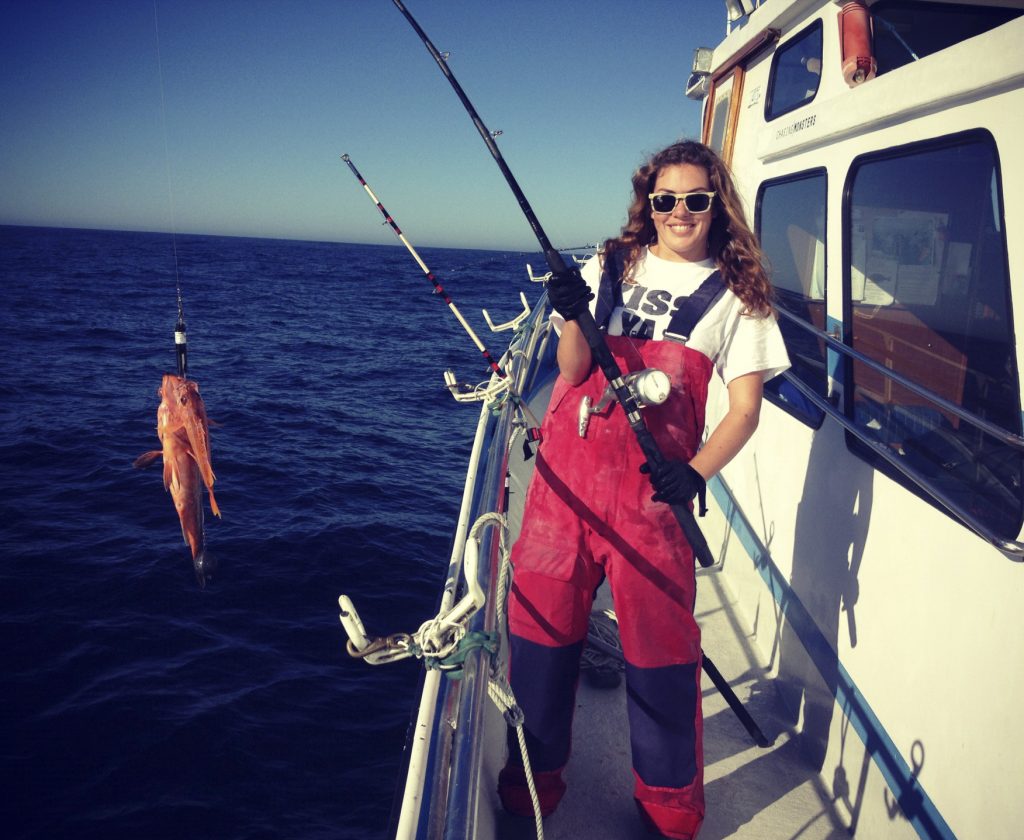Rockfish Conservation Area (RCA) Studies
Rockfishes (genus Sebastes) are among the most numerous and important fishes (both commercially and recreationally) in California's nearshore environment. Due to previous overfishing of several key species, however, fishery management agencies have reduced allowable catches through a combination of bag limits, gear restrictions, and area closures.
In 2002, the Pacific Fishery Management Council enacted area closures in the form of Rockfish Conservation Areas (RCAs) because of the critically low population sizes of seven overfished rockfish species. These areas prohibit the take of rockfishes across vast stretches of continental shelf along the west coast. The assessment of these RCAs, which have now been closed for over a decade, is of keen interest to determine their effects on local rockfish populations. As a result, the Fisheries & Conservation Biology Lab at MLML conducted two separate collaborative fisheries projects to evaluate potential temporal changes in the species compositions, densities, length frequencies and bycatch of fishes in central California RCAs.
Project 1: RCA Hook and Line Surveys : we assessed the efficacy of the RCA by comparing data from hook and line fishing surveys (2012-2014) with historical catch data collected by the California Department of Fish and Game (1988-1995)
Project 2: Deepwater Video Lander: We developed a rotating video Lander to test whether altered vertical longlines could be used to target abundant fish stocks while avoiding overfished species

Fishery-SCUBA Comparisons
Collaborator: Mark Carr - Raimondi/Carr Lab (UC Santa Cruz)
Area-based fishery management and ecosystem-based management strategies are beneficial marine resource management tools, but require finite information about the structure and function of ecosystems to evaluate populations and describe ecosystem effects of fishing. The required information is unlikely to be obtained from sporadic, fishery-dependent data collected from data-poor fisheries, and it is expensive to conduct extensive fishery-independent surveys. This situation has led to an interest in relating or combining information from a variety of disparate sampling methods.
From 2003-2006, we investigated relationships between estimates of catch-per-unit-effort (CPUE) and abundance generated from typical nearshore commercial fishing operations and estimates of density and abundance derived from SCUBA surveys in the same locations. Relationships among CPUE estimates from different sampling methods were found to be statistically significant in the case of many of the common species sampled across sites in Carmel Bay, CA. The compounding effects of within-sample variance and the error associated with regression equations, however, would result in poor confidence in values translated from one sampling method to another.
Our results indicate that different sampling methods may each provide reasonable estimates of population trends, but are sufficiently different and variable so as to preclude the use of a scaling factor to standardize population estimates among sampling methods. Also, differences in species composition (i.e., relative CPUE among species) recorded by each gear type were significant among sampling methods and were also affected by habitat relief and sample depth. Nonetheless, our results suggest the promise and value of a cost-benefit analysis that could allow managers to design optimal sampling strategies for characterizing CPUE relationships within a region of interest. A sampling program that benefits from the complementary strengths of both fishing gear and SCUBA sampling will likely result in the most comprehensive description of nearshore fish assemblages.
Starr, R.M., M. Carr, D. Malone, A. Greenley, and S. McMillan. 2010. Complementary Sampling Methods to Inform Ecosystem-Based Management of Nearshore Fisheries. Marine and Coastal Fisheries: Dynamics, Management, and Ecosystem Science. 2:159–179.

